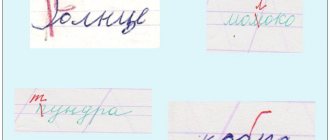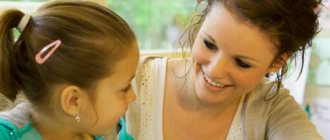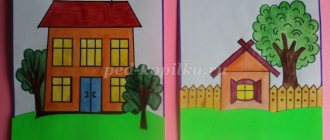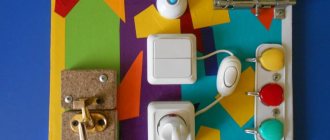Purity of speech affects future success at school and the process of social adaptation. Logorhythmics for children 2-3 years old is recognized throughout the world as a universal method for improving speech skills.
Logorhythmics is based on a set of exercises to improve articulation and breathing, physical fitness, and sense of rhythm. As a result of classes, both the ability to navigate the huge world around us and the understanding of the meaning and order of completing the proposed tasks increase. The little person begins to show himself as a creative person.
Logorhythmic games for children 4-5 years old
By the age of 4-5 years, the final development of speech occurs. It is important to pay great attention to the pronunciation of sounds and strengthening the articulation of sounds. Therefore, speech therapy exercises at this age occupy a special place.
The horse runs tsk-tsk-tsk, (clicking movements of the tongue from the palate)
A bird chirps in a field. (same clicking noise but from teeth)
A friend is sitting on the bank (smile, teeth unclenched)
And catches a fish in the sea (they close and straighten their lips)
Breathing continues to develop. Speech breathing should be distinguished from the general one. You can perform exercises for alternating short and deep breathing:
Doll Masha wants to sleep. (inhale through your nose, exhale with a drawn-out sound “ahhhh”)
Let's sing her a song. (inhale through the nose, on one exhale repeat the syllable “la-la-la” three times)
Doll Masha fell asleep. (sniffle)
The right time for such exercises would be gymnastics after an hour of sleep. Together with general motor skills, fine motor skills are actively developing. It is worth adding acting skills to logorhythmic games and exercises, teaching children to get used to the role and operate with various phrases:
- I am a cheerful cockerel (inhale, exhale “ko-ko-ko”)
I have a comb. (shake head)
— I am a frowning turkey (inhale, exhale “pa-pa-pa”)
I'm looking for grains bale-bale (tilt my head as if pecking at the grains)
- I’m a mischievous horse (clicking tongue from the roof of your mouth)
Golden tail and mane (shake your head)
The expressiveness of movements should correspond to the emotional state of the hero. Children learn to manage their emotions and express them correctly. You can change the exercise words as you play. Let the children do it themselves, do not interfere with their imagination. When the children learn the words, let each of them do the exercises one by one.
Game 1
A good game would be to guess your classmates. It develops tactile sensations, general motor skills and rhythm: children stand in a circle, and one child in the center. He is blindfolded. The children begin to walk in circles. The teacher says “stop” and the children stop. The child in the center of the circle approaches one of the children in the outer circle and guesses who it is.
Game 2
A popular game for this age is “Sea Figure, Freeze!” Children take on the role, play actively, learn to listen to music and quickly respond to brake lights. Freezing in certain positions reinforces knowledge about the capabilities of your body.
What it is
In preschool educational institutions, logorhythmics for toddlers and children 2-3 years old is used as one of the means of correctional pedagogy. An integrated technique, the name of which consists of two words – speech therapy and rhythmics, is necessary to improve speech, develop musical ear and coordination.
The method is successfully used by Russian specialists in correctional pedagogy; Ekaterina Zheleznova played a special role in its popularization. A full range of classes using different types of games and training includes:
- walking with a change of direction;
- breathing exercises;
- gymnastics that improves muscle tone;
- articulation of poetry;
- singing.
At each lesson, the child encounters music, words and movement, regular training accustoms him to a routine, they have a beneficial effect on the formation of the musculoskeletal, speech and other systems of the body.
Logorhythmic games and exercises for children 5-6 years old
At this age, children, as a rule, already speak well and know how to control their body. The child's body is full of strength and energy. Active games and exercises that require physical effort are suitable. To prepare for beautiful handwriting, logarithmic exercises for fine motor skills and self-massage (rubbing palms, fingers, acupressure exercises) are used.
It’s not for nothing that winter is angry, (shaking index finger)
Its time has passed. (rubbing palms)
Spring is knocking on the window (knock on the palm with a finger)
And drives them out of the yard (waving their arms, driving away winter) (F. I. Tyutchev)
Logorhythmics at this age should be aimed at developing a sense of rhythm and emotion in speech, and correct intonation. At 5-6 years old, you need to teach your child smooth speech and voice, and continue to develop breathing. During the year there is active preparation for school. With the help of logorhythmic exercises, attention and concentration are developed.
Transitions of music tempos from slow to fast and back are relevant at this age. To gain a sense of rhythm and tempo, you can let children play musical instruments themselves and beat out a simple rhythm together, for example, on spoons and tambourines. In the older group, exercises are of a regulatory nature. Teach children independence. Exercises where the child himself must guess what movement needs to be made at the moment are well suited for these purposes. For example, when you hear the words “snowflakes are spinning,” you need to spin around with your arms out to the sides:
All the snowflakes are whirling in the wind, (whirling)
Without doubts and worries. (jump, breathe through their nose)
So we guys are together (holding hands)
Together we will stand in a round dance (they walk a circle in a round dance) (M. A. Mordvin)
The help of a teacher is required when performing the exercises for the first time.
Logorhythmics by Ekaterina Zheleznova for children 2-3 years old
Music will become an essential part of training if you use a specially designed complex. The system of correctional pedagogy was developed by many domestic scientists, but Zheleznova’s logorhythmics for children 2-3 years old is especially popular among parents.
It includes musical accompaniment; it is necessary to use backing tracks; an additional result of using the technique will be the development of phonetic hearing. Simple songs about a bus, a bear, or a spider are constructed in such a way as to maximize the training of the muscles responsible for articulation.
The complex will be most useful for the age group up to four years old; at this stage of life, hearing and a penchant for music are well formed. Zheleznova’s speech therapy logorhythmics for children 2-3 years old will be a universal way to harmonize a child’s personality and help him grow spiritually, but it should not become the only method.
Additional training and games, such as “Postman” or “Wind and Trees,” will introduce the little person to the people and phenomena of the world around him. They also combine a complex of poems and movements.
Systematic use of logorhythmics, combination of activities with teachers and parents, monitoring and correction of results will quickly affect the development of the baby and the quality of his speech. The successes he achieves will bring joy to his parents, stimulating them to continue their studies.
Logorhythmic games for children who stutter
Logorhythmic exercises for children with stuttering include complexes that strengthen muscle tone, articulation, and diaphragmatic breathing. All exercises must be agreed upon with a speech therapist. Children with speech impairments require a special approach, cannot master musical exercises in full, and require repeated repetition of rhymes and songs. Be sure to pronounce each sound:
The children have a doll in their hands. They clearly pronounce the sounds with the correlation of the action in verse to the doll:
Masha washed Mila with soap.
Exercise:
We put a lock: (smile, teeth closed)
The tongue couldn't get through. (tongue rests on teeth)
The main goal of such games for children with stuttering is to develop the tempo of speech, the rhythm of movements, the smoothness of the voice and coordination in a static and dynamic position. In addition to the speech therapy part, the classes are socially adaptive in nature. They teach behavior in a team, develop the emotional-volitional sphere. This includes activities that transition from a slow walk to running:
Early in the morning they go to visit -
Only best friends. (hugs with a classmate standing next to him)
Turtle with a thick cane
It was not in vain that I set off on my journey. (slowly raise their legs, imitate a step)
The little squirrel called all the animals,
I distributed invitations. (bows in different directions)
Mouse, bear and little rabbit (mouse - walk on tiptoes, bear - clumsily, little rabbit - jump)
They dressed up like they were going to a ball. (make a bell with your hands)
The fox is running as fast as he can - (imitate running)
After all, you can't be late. (they shake their index fingers alternately)
To dance around
Sliding smoothly across the floor. (spinning)
(M. A. Mordvin)
From smooth hand movements to fast ones:
They barely tilt
They ate the tops of their heads straight to the ground. (slowly swing your arms up and down while leaning forward)
A bird flutters in the sky,
Like an eyelash above an eye (stand on tiptoes, quickly wave your arms)
(M. A. Mordvin)
It is advisable to perform the exercises with a music teacher accompanied by live music that is not distorted by the recording. Acting games are performed together with the teacher. First, collective performances or performances without the children’s words are performed, then each child is invited to learn his own words and act out a short story. Words must be selected strictly according to the characteristics of each child and have a focus on those parts of pronunciation that require increased attention. Thus, a collective lesson turns into an individual one.
Relaxation exercises are performed in conjunction with exercises that require increased load. Such games and activities should alternate. The relaxation exercise should be proportionally equal to the load received by the children in the previous game.
Summary of the logorhythmic lesson “Visiting a fairy tale”
A cunning sister lives in the forest.
If he sweeps his tail, he will cover his tracks.
What kind of sister is this?
Her name is... (fox)
Children continue to move in a circle: walking on their toes turning into a light run, hands in front of them.
- Well done guys, you guessed all the heroes of the fairy tale. Now tell me what this fairy tale is called
Children:
Cat, rooster and fox.
A crow appears behind the screen.
- Guys, I’ll tell you this fairy tale in a new way. Do you want to know what other story happened to these heroes?
Children:
Yes!
Raven:
But you will have to help me.
Ready? Children:
Yes!
Raven:
To do this, you and I need to go on a carpet airplane into the forest.
We each sit down on our own magic carpet. (each child sits on a gymnastic mat)
Exercise No. 2 for developing breathing “Magic carpet”
The carpet is an airplane
(the child spreads his arms to the sides, palms up, raises his head, inhales)
Takes flight
(holds his breath)
Zhu-zhu-zhu (makes a turn to the right)
Zhu-zhu-zhu (exhale, says zh-zh-zh)
I’ll stand and rest
(stands up straight, arms down)
I’ll fly to the left
(raises head, inhales)
Zhu-zhu-zhu (makes a turn to the left)
Zhu-zhu-zhu (exhale, zh-zhu-zh)
I’ll stand and rest ( stands up straight and lowers his hands).
Repeat 2-3 times
After this, the children get up and sit back on the chairs or on the carpet in front of the screen.
Main part
Raven:
Once upon a time, in a fairy-tale and magical forest there was a hut.
And they lived there.....(a cat appears) - meow-meow! and... (a rooster appears) - KOO-ka-re-ku! Ku-ka-re-ku! Somehow friends decided to go on a long journey around the world in search of treasure. One very ancient legend said: “What is stored in this chest is what can make anyone the smartest, strongest and bravest.” But not only the cat and the rooster knew about this chest, but also their old friend - the fox (the fox appears behind the screen), who also dreamed of becoming the smartest, strongest and bravest in order to take revenge on her old enemies. And she decided to pretend to be kind and go on this journey together with the cat and the cockerel.
- Guys, are you ready to go with our heroes on this exciting adventure and if necessary, help our friends?
Children: Yes!
Raven:
We are going on a journey to highlight our friends on the train.
Please take your seats quickly. Exercise No. 3 for coordinating speech with movements: “Wheels knock, knock, knock” Text: Andrey Pisnoy and associates. Music - NeluStratan
Children stand one after another in a circle. Then they repeat the movements and words to the music after the teacher.
Behind the screen: The heroes also board the train.
Raven:
Stop "Flower Glade"!
On the floor there are pictures depicting different wildflowers: dandelion, bell, chamomile, cornflower, clover, poppy, hogweed flowers, buttercup, henbane flowers, lily of the valley, hemlock (vekh) flowers, celandine flowers, hemlock inflorescences.





